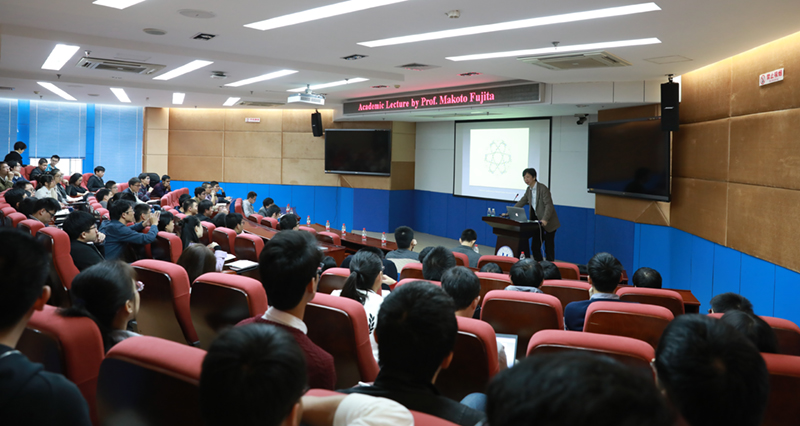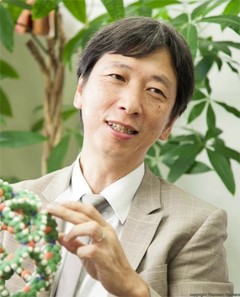报告题目:Coordination Self-Assembly: from the Origins to the Latest Advances
报告人:Prof. Makoto Fujita, The University of Tokyo, Japan
时间:1月6日(周五)上午10:00-11:30
地点:卢嘉锡楼202报告厅

|

报告人简介:
In view of constructing nanoscale discrete structures, Fujita has pioneered a novel principle of metal-directed self-assembly, in which transition-metal ions induce the spontaneous formation of targeted large frameworks. His method features an extremely elegant use of palladium's square planar coordination geometry which was first demonstrated in 1990 by the self-assembly of a Pd(II)-bipyridine square complex. Later on, a large variety of related molecules has been synthesized such as, in particular, cages, capsules, tubes, catenanes, and spheres. Most of these structures have large hydrophobic cavities, within which Fujita elaborated and studied unique molecular recognition events that led to controlled chemical reactions and induced physical properties, at a very early stage of this research area. These earlier studies have strongly contributed to trigger the rapid development of molecular self-assembly in the course of the last twenty years. Since 1994, Fujita has also strongly contributed to the field of porous coordination networks (so-called MOFs). Binding of organic guests in the pores was applied to a new X-ray technique “crystalline sponge method” that does not require the crystallization of samples. |